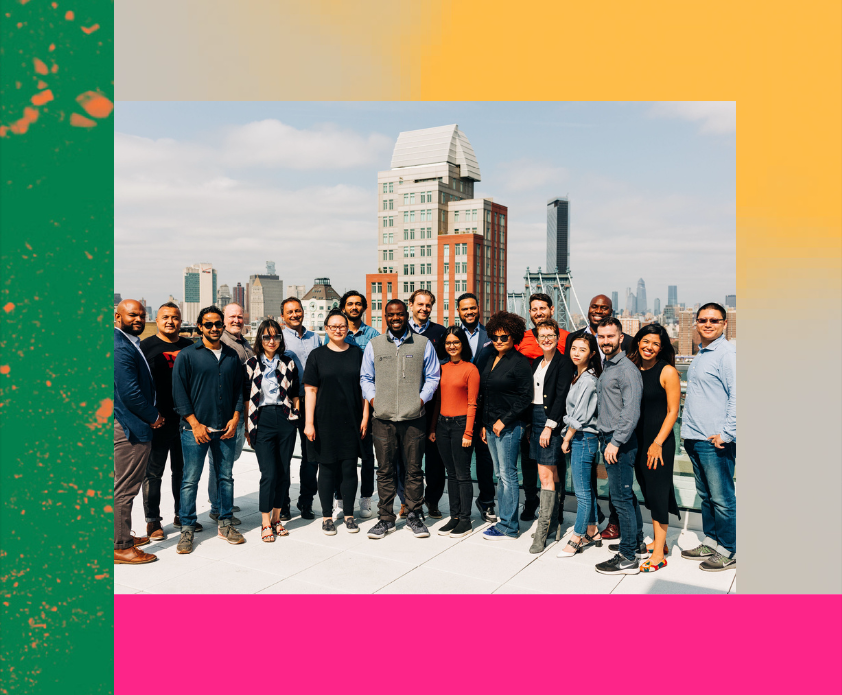
When Solstice co-founder and CEO Steph Speirs was working on Middle East policy in Yemen for the Obama White House National Security Council, she would look out the windows of armored SUVs and see thousands of Yemenis waiting in line for fuel. She saw that affordable clean energy access should be a human right, yet the global economy’s addiction to oil left ordinary citizens without the power they needed. Steph left the administration to work on deploying renewable energy and bringing clean, distributed, and democratized energy to the people who needed it the most. After stints in India and Pakistan selling renewable energy to off-grid communities, Steph and her co-founders realized that most people back home in America were still locked out of the clean energy market. They founded Solstice with the objective of putting affordable solar in the hands of every American, regardless of their income or the roof they possessed.
Melissa, Elemental Excelerator Chief of Staff, recently sat down with Steph to talk about the inflection points in her life that led her to co-found Solstice and how the company is working to democratize access to renewable energy.
–
Melissa: You’re originally from Hawaiʻi, ʻIolani Senior Class President of 2003.
Steph: That’s right! I was born and raised in Hawaiʻi, and I’m the child of immigrants. Growing up in Hawaiʻi, you learn how to mālama the ʻaina, to take care of the land and that which nourishes us. Hawaiʻi has informed so much of my identity, from a familial comfort with multiculturalism to a deep reverence for nature. And, a reverence for Spam!
Melissa: During Kickoff Week, we developed an equity rationale with each Equity & Access Track company. Would you mind sharing Solstice’s?
Steph: Sure. Solstice provides community solar to the 80 percent of Americans that
cannot put solar on their own home, which includes renters and those whose roof isn’t suitable for an installation. Rather than put solar on your own home, you buy a portion of a neighborhood shared solar farm. The electricity from the shared farm goes back to the grid and, as a participant, you see a credit that shows up on your monthly utility bill for the solar produced. This is the most affordable and accessible type of solar because you don’t have to pay an upfront cost, and you save money on your electricity bill every year. In a lot of ways, it’s like a community garden, but for solar.
You heard the story about Yemen and the White House, but my true personal rationale for working on Solstice is a little different. My mom is the real reason I came into this work. She raised three kids alone on a salary of about $14,000 a year. She was a low-income renter and some months she had to choose between paying our rent, credit card bill, or electricity bill.
Solar is cheap enough that it can save people money on their electricity bill, if they could just access it. Forty-two percent of Americans are classified as low- to moderate-income, and community solar can help them save more money to fund everything else in their lives.
Melissa: Solar PV, despite its prevalence, is still often reserved for higher-income homeowners. How is Solstice designing a business model for low-income homeowners and renters to access solar in California?
Steph: California is a rich and abundant state for solar, and yet its regulations generally do not allow for community shared solar. That means, for the most part, the only people in California that have solar power are higher-income homeowners who can afford to put it on their homes.
Through Elemental Excelerator’s Equity and Access Track, we are working to deploy in California through a newly regulated state program for shared solar on affordable housing. We are working in partnership with cities and community organizations in California to line up the project sites, developers, and financiers. Any affordable housing property owner is eligible, and the power will benefit both the property owner as well as the tenants. It will be transformational because this is going to be one of the first projects in California that allows low-income renters to access affordable community solar.
Melissa: Solar isn’t the only industry and technology being democratized. It’s happening in other sectors around the world.
Steph: This is something I think about all the time. We live in a world where talent is universal, but opportunity is not. One of the most powerful aspects of Solstice’s work, as well as the work of our fellow Elemental Excelerator portfolio companies, is that we’re working to create a world where opportunity is universal. Where the circumstances you were born into do not determine your livelihood, income, and job opportunities. For solar, this means helping everyone access solar power, regardless of their income and regardless of what type of roof they have.
Melissa: That’s beautiful. Thank you.




